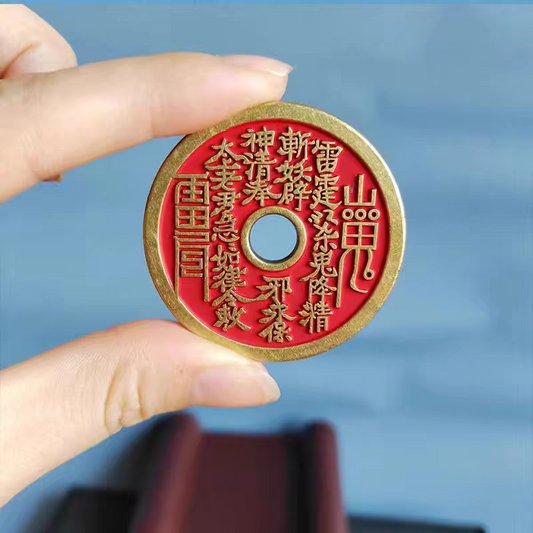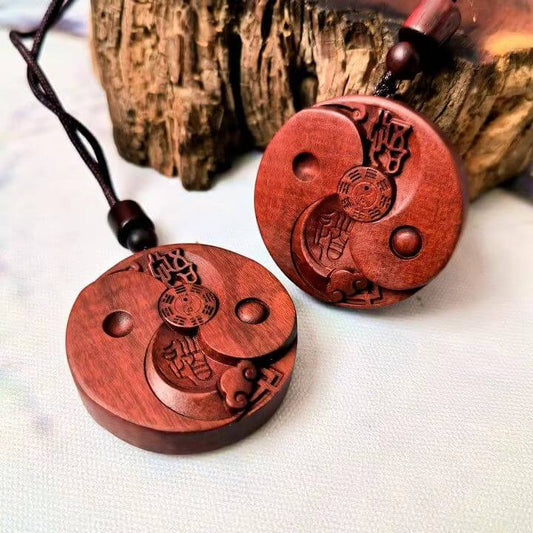
How does Taoism view love and marriage?
paulpengShare
Taoist Love & Marriage: A Dance of Yin-Yang – Harmony, Not Perfection – A Guide to Sacred Partnership
Introduction: Love as a Cosmic Duet
In Taoist philosophy, love is not a fleeting passion or a divine command—it’s a sacred dance of yin and yang, the ancient forces of receptivity and action. Unlike religions that view marriage as a sacrament (Christianity) or a distraction (Buddhism), Taoism celebrates love as a mirror of the universe: imperfect, dynamic, and inherently holy. Let’s explore how Taoist teachings on harmony (和), naturalness (自然), and mutual growth (双修) offer a refreshing perspective on modern relationships.
1. The Taoist View of Love: Yin-Yang in Motion
Core Beliefs
- Yin-Yang Unity: Love is the interplay of opposites—like a river (yin: soft, flowing) and a mountain (yang: strong, stable). No “perfect match”—just complementary energies.
- No Sin, No Shame: Taoism has no concept of “original sin.” Desire is natural, like hunger or thirst—a gift of the Tao (nature).
- Love as Meditation: A relationship is a practice of wu wei (effortless action). Not about controlling your partner, but dancing with their rhythm.
Taoist Wisdom
- “The best love is like water: it nourishes without demanding, flows around obstacles, and finds its own path” (adapted from Tao Te Ching).
- Example: A Taoist couple might plant a tree together—each tending to it in their way (one waters, the other prunes), trusting the tree (their love) to grow naturally.
2. Marriage: A Sacred Covenant with Nature
Purpose of Marriage
- Harmony for Society: Marriage stabilizes communities (yin: family, yang: society).
- Spiritual Partnership: Couples practice “dual cultivation” (双修) – growing spiritually through shared challenges.
- Not a Lifetime Sentence: Divorce is acceptable if the relationship loses its natural flow (like a river changing course).
Taoist Wedding Rituals
-
Three Bowings:
- To Heaven and Earth (honor nature).
- To Ancestors (acknowledge lineage).
- To Each Other (commitment to growth).
- Unity Cup (合卺酒): Drinking wine from a split gourd—symbolizing two becoming one, yet remaining distinct (yin-yang).
- No Vows of “Eternal Love”: Instead: “I vow to walk with you as the seasons change—nurturing our love like a bamboo, bending in the wind but rooted in trust.”
3. Contrast with Other Religions
| Aspect | Taoism | Christianity/Buddhism |
|---|---|---|
| Purpose of Love | Natural expression of yin-yang | Divine plan (Christianity) or obstacle (Buddhism) |
| Marriage Status | Secular and spiritual partnership | Sacrament (Christianity) or renunciation (Buddhism) |
| Ideal Relationship | Balanced imperfection | Selfless devotion (Christianity) or detachment (Buddhism) |
| Divorce | Acceptable if harmony is lost | Sin (Christianity) / discouraged (Buddhism) |
Case Study: A Taoist couple vs. a Christian couple:
- Taoist: “Our arguments are like thunderstorms—clearing the air for new growth.”
- Christian: “Conflict is a failure of love; we must pray for unity.”
4. Taoist Love Advice for Modern Couples

1. Cultivate “Soft Strength” (柔弱胜刚强)
- Yin (softness) tames yang (rigidity). A partner’s gentle suggestion may resolve a conflict better than a logical debate.
-
Exercise: Try the “Three-Step Listening”:
- Listen without interrupting (yin receptivity).
- Repeat their point: “You feel… because…” (yang clarity).
- Respond with: “How can we flow with this?” (wu wei action).
2. Honor the “Empty Space” (留白)
- Taoism values emptiness (the space between notes in music, the gap in a cup). Couples need solitude—time apart to recharge yin or yang energy.
- Example: One partner meditates in nature (yin); the other creates art (yang). Reconnecting, they share their “empty spaces” like two rivers merging.
3. Embrace “Divine Flaws” (大巧若拙)
- Perfection is unnatural. A Taoist lover might say: “Your forgetfulness is your charm—it reminds me to live in the moment.”
- Exercise: Each week, share one “flaw” you cherish in your partner.
5. Famous Taoist Love Stories
1. The Legend of Dong Yong and the Weaver Girl (董永与七仙女)
- A mortal (yang) and a fairy (yin) fall in love. She helps him weave cloth (yin skill), he protects her (yang strength). Their love transcends heaven-earth boundaries—symbolizing love’s cosmic power.
2. Zhuangzi’s Wife: Death as a Natural Parting
- When his wife died, Zhuangzi (a Taoist sage) laughed and drummed on a bowl. “She has returned to the Tao, like a leaf falling into the forest. Why mourn the natural cycle?” – A reminder that love includes letting go.
6. Modern Taoist Relationships: Balancing Tradition and Equality

Gender Roles
- Traditional: Men (yang) handle external affairs; women (yin) nurture the home.
- Modern Adaptation: Roles fluid—yin/yang energy matters more than gender. A stay-at-home dad (yin) and a CEO mom (yang) can thrive if energies balance.
LGBTQ+ Inclusion
- Taoism celebrates diversity as part of nature’s yin-yang spectrum. No scriptural bans—love is love, regardless of gender.
- Example: The “Rainbow Dragon” (彩虹龙) ritual in modern Taoist weddings blesses same-sex unions: “Two dragons, one sky—different colors, same storm.”
7. Why Taoist Love Philosophy Resonates Today
- Anti-Perfectionism: Relieves pressure for “perfect love.”
- Eco-Romance: Love as a microcosm of nature—no control, just coexistence.
- Holistic Wellness: Studies show couples who practice qi-gong together report higher relationship satisfaction (linking physical and emotional harmony).
How to Practice Taoist Love (For Everyone)
- “Nature Date”: Walk in a park, say nothing for 15 minutes. Feel your breath sync with the wind—then share what you noticed.
-
“Yin-Yang Journal”: Each partner writes weekly:
- Yin (receptive): What did I receive from our relationship this week?
- Yang (active): What did I give?
- “Conflict as Poetry”: Next argument, pause and say: “This is our storm—what new growth will it bring?”
Conclusion: Love as a Taoist Art
Taoist love is not a fairy tale—it’s a living masterpiece, painted with patience, imperfection, and the occasional storm. While other religions may seek love’s “eternal flame,” Taoism offers a more earthly (and relatable) vision: love as a tree, growing rings through seasons of drought and rain, its roots tangled with another’s, both reaching for the same sky.
As the Zhuangzi teaches: “Love is the Tao’s song—hear it in the rustle of leaves, the rhythm of breath, and the silence between words.”
For the modern lover, Taoist philosophy offers a radical promise: you don’t need to fix your relationship—just listen to it. After all, the Tao whispers: “Harmony is not the absence of conflict, but the music of opposites dancing as one.”











